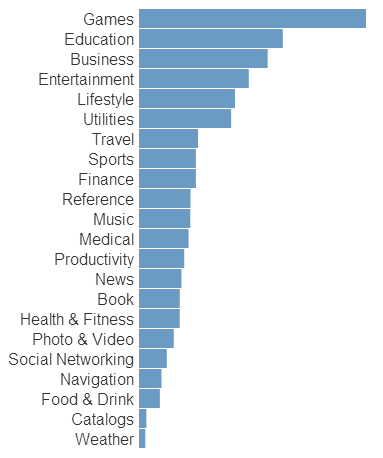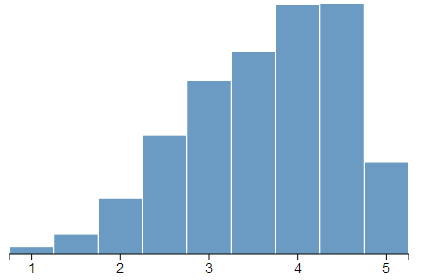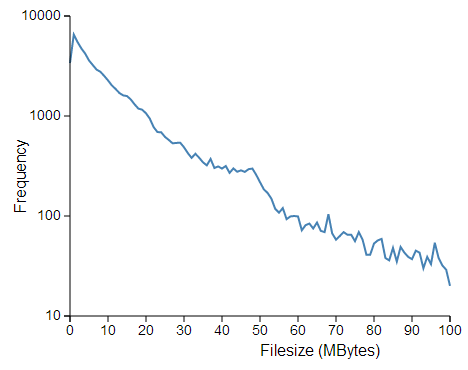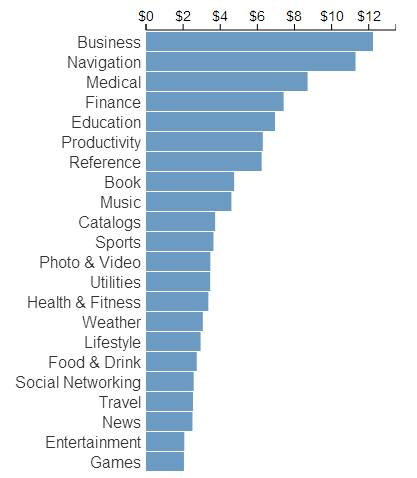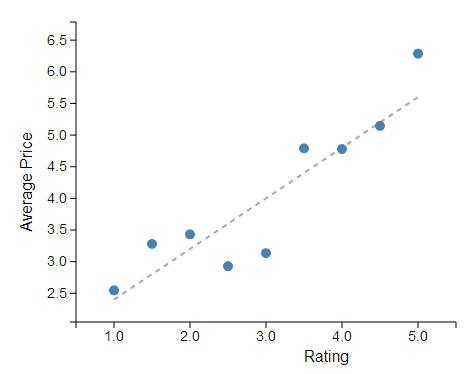How many apps in the App Store do not have a rating, the relationship between the number of downloads and the weight of programs, as well as the high ratings of paid apps, was told by Colin Eberhardt from Scott Logic Labs.
Having collected the App Store metadata that is publicly available, Colin shared in his blog what he learned from them about the app store of the Apple company.
- 16% of apps in the App Store are games;
- 75% free;
- 60% are deprived of a rating.
If we take the remaining 40% for 100%, then 21.4% of them have a score of 4 points, and the same amount of 4.5 points. Only 7.8% have five “stars”. I am glad that applications with a score of one point are only 0.6%.
The graph below shows the estimated fragmentation of applications by category. As you can see, most of the “great” apps are in the Business and Lifestyle categories.
But the most interesting thing, of course, is not this.
Colin found out that there is a direct relationship between the number of downloads and the weight of the application: the heavier the application, the less often it is downloaded. In other words, if you want a hit on downloads, don’t make the game heavier than 50 megabytes.
By the way, we are wondering in this aspect whether the following statement will be true:
All other things being equal, buying traffic for an application weighing 10 megabytes will give more than buying traffic for an application of 100 megabytes.
Now look:
- Candy Crush Saga – 41 megabytes;
- Clash of Clans – 48.8 megabytes;
- 2048 – 2 megabytes;
- Underworld Empire – 33.5 megabytes;
- Jelly Splash – 53.9 megabytes.
Heavy hits are not visible.
As for Colin’s research, he also found out that the average cost of a paid game is $2.04. The highest average price for business applications is $12.25.
There is also a relationship between price and rating. But do not confuse cause with effect. If you suddenly raise the price, do not expect that you will have good ratings.
The full version of Colin’s research and a brief guide to downloading metadata from the App Store can be found here.
By the way, Colin drew conclusions based on information about 75 thousand new applications.
A source: http://www.scottlogic.com


